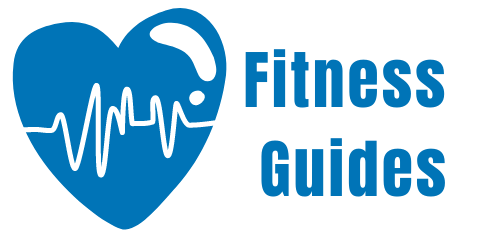Whether you’re working out from home or going to a gym, your purpose is to train smarter. After all, you want your workouts to be effective and not time-consuming, right?
That’s why we included some of the best advice to help you on your fitness journey. We’ll analyse studies, talk facts, and give you great tips, most of which we tried for ourselves. Read below.
Table of Contents
1. Do It Anytime
Some articles claim that the best time to train is first thing in the morning, on an empty stomach, to accelerate your metabolism. However, this approach can live you feeling nauseated, tired, and ready to give up.
Other articles suggest that a 45-minute session per day is ideal for weight maintenance and muscle toning. As you read these articles you feel the stab of an unseen finger wagging in your direction, together with a patronising quirk of the eyebrows. After all, everyone can find 45 minutes for exercise, the authors imply.
But the reality is different. Almost 50% of people don’t have the time or energy to exercise. So, there’s a fifty-fifty chance you’re in this category.
Our advice is this: work out any time you have the chance.
Do it for 5 minutes multiple times per day when you take breaks. Do it when you’re watching TV. The point is to get moving so that you can activate your muscles.
So, if you’re time-challenged like most people today, consider getting a home gym. A rowing machine or an elliptical is a good choice for full-body strength training.
2. Use Compound Movements
If you’re short on time, there’s nothing better than total body training. Compound movements activate all your muscles so that you can tone your entire body quickly. The extra effort increases your heart rate more, therefore you’ll get a more intense cardio workout too.
For instance, you can combine squats and shoulder presses to work your hamstrings, glutes, plus your shoulders and back. You can also try lunges and tricep kickbacks or calf raises plus bicep curls.
Remember not to use any jerking motions when doing these compound movements. You’ll notice increased pressure in your core area, so make sure you’re keeping your body steady.
3. Use Resistance Bands and Weights
If you’ve already incorporated exercise into your routine, we advise you to use resistance bands and weights as often as you can.
Make sure not to do any flailing motions and to ensure you have a proper form to avoid accidents.
That said, studies show that adding resistance bands to your treadmill or stationary bike will help you tone better. Some models come with added weight or bands, but you can purchase your own. You can also wear weighted vests, especially for lower body and back workouts.
If you have a limited budget, you can use soup cans or make your resistance bands from elastic pantyhose.
4. Keep a Proper Form
The weight you lift is important to build lean muscle. You should challenge yourself enough that by the last few repetitions, you’re struggling to lift the weight.
Sometimes people use weights that don’t challenge them because they’re afraid to lift heavy. But you won’t look gorged if you lift heavy unless you spend eight hours per day lifting and gulping protein shakes.
Other times, people lift too much because they want to build more muscles quickly. That’s a big mistake because lifting too heavily for what you can handle ruins your form. Bad form leads to accidents and even slower progress.
Here’s why.
When you’re form isn’t right, your muscles aren’t targeted correctly. As a result, they won’t look better if you lift more.
But what if one body part is stronger and the supporting body part is weaker?
Let’s take a common example: deadlifts.
Lots of people’s legs can handle a lot of weight for deadlifts, but their backs can’t support that weight. Our advice is to lift as much as your back muscles can handle. Work to strengthen your back muscles and, in the meanwhile, try leg presses or leg curls.
Or, peak at the next two tips below:
5. Pulse Workouts
Don’t take our word for it. Try it for yourself during your workouts. For instance, after a strength set of ten bicep curl repetitions, add ten-twenty pulses. Lower your weight or drop it completely until you get used to doing pulses. Your workouts will leave you feeling more sore than usual, which is a good sign your muscles are working.
Here’s why pulse workouts are effective.
When doing the full range of motion of an exercise, you’re activating the main muscle groups involved in that type of exercise. For instance, we’re talking about hamstrings and glutes for squats.
But, when you’re doing the pulse motion, you’re activating the supporting muscle groups more. In the case of squats, we’re talking about the quads.
So, adding pulses after your full-range of motion exercises engages your muscles comprehensively. It also helps you reduce muscle fatigue so that you can train smarter, and not necessarily harder.
6. Mix Up Your Workouts
Cardio workouts raise your heart rate and help you lose weight quickly in the short-term. There’s also a lot of research surrounding HIIT and weight loss.
But you may not be able to do high impact movements if you’re just starting, recovering from an injury, or pregnant. Besides, cardio can be good for weight loss, but strength is better for building muscles.
You can try other types of workouts too. Pilates, barre, functional training, vibration machines, and trampoline jumping are just a few.
All these workouts target your muscles in different ways. As you mix them up, you ensure that your muscles get comprehensive workouts so that you can tone faster.
7. Work against Your Bodyweight
When you work against your body weight, you can see the results faster because your muscles work harder.
All you have to do is contract your muscles and push against your strength. You can do this for all types of exercises.
As we said in the previous section, cardio is not best for building lean muscles although it has a toning effect. However, if you like cardio and want to take more out of it, contracting your muscles when you’re doing it is better than simply flailing your limbs around.
Working against your bodyweight is also safer. When you’re doing rapid movements that you have no control over, it’s more difficult to maintain the correct posture.
8. Don’t Forget to Stretch
If you’re time-challenged, you may be tempted to skip stretching, but remember that it’s an important part of your routine.
Training smartly means you’re doing your best to decrease the chances of injury. Tight muscles pull on your joints, leading to tension and pain.
Conversely, stretching increases your flexibility and circulation so that you can reduce recovery times. Stretching also gives you more energy and an increased range of motion. As such, you’ll have more stamina for your workouts and you can employ your muscles more effectively to tone better.
9. Rest When You Need
Resting is essential during and after workouts. Exerting your sore muscles doesn’t increase their size; instead, it weakens them. Besides, stressful workouts make most people quit exercising.
It’s better to listen to your body and take plenty of breaks. Set one or two rest days per week and respect them. Also, don’t blame yourself for differences in your stamina or strength. Our ability to exercise varies depending on the time of day, hormonal changes, how well we slept, how stressed we are, and so forth.
Wrap Up
We analysed nine tips on how to train smart and to build more lean muscles. Remember to mix your workouts, to stretch, and to rest. You should also incorporate antagonistic movements and pulses into your routine. Remember to use weights or consider a full-body strength training machine like a rower.
Now, let’s hear more from you. What are some of your secret training tactics? Let’s talk in the comments below.
- At What Incline Should You Walk on a Treadmill? - August 29, 2022
- 7 Best Budget Exercise Bikes (under £200) - April 5, 2022
- 6 Best Compact Treadmills for Small Spaces - April 5, 2022




